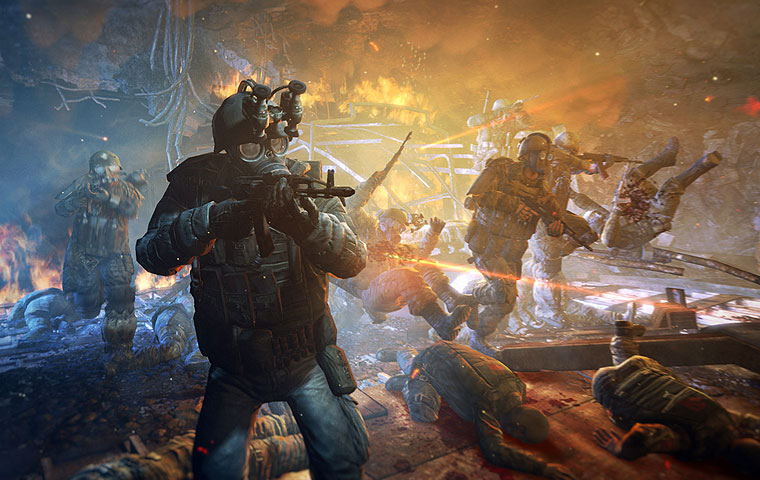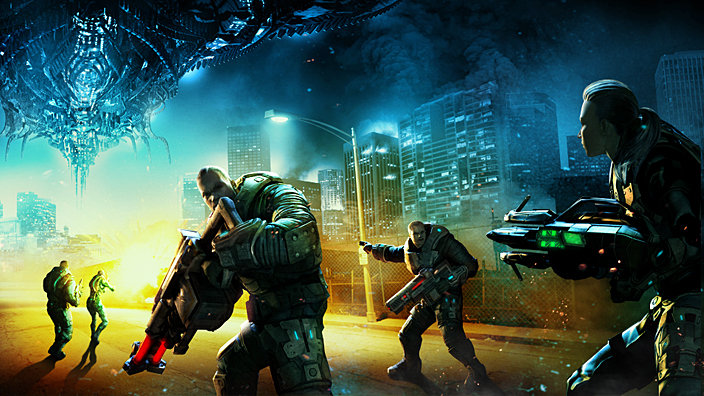Around 73% of American kids age 2-17 played video games in 2019, a 6% increase over 2018. Video games accounted for 17% of kids’ entertainment time and 11% of their entertainment spending. The global video game industry was worth contributing $159.3 billion in 2020, a 9.3% increase of 9.3% from 2019. [136] [137]
Violent video games have been blamed for school shootings, increases in bullying, and violence towards women. Critics argue that these games desensitize players to violence, reward players for simulating violence, and teach children that violence is an acceptable way to resolve conflicts. [60] [61] [80] [53]
Critics of violent video games argue that playing violent games desensitizes players to real-life violence and is responsible for the increasing rates of bullying. In 2007, 32% of students aged 12-18 reported being bullied at school, compared to 5% in 1999. Some researchers are concerned that violent video games teach children that violence is an acceptable approach to solving conflicts and achieving goals. [46] [47]
Video game advocates contend that a majority of the research on the topic is deeply flawed and that no causal relationship has been found between video games and social violence. They argue that violent video games may provide a safe outlet for aggressive and angry feelings and may reduce crime. [34] [36] [37]
Defenders of violent video games argue that the research has failed to show a causal link between video games and real-world violence. They argue that correlations between video games and violent behavior can be explained by youth predisposed to violence being attracted to violent entertainment. Additionally, if video games do cause youth to be violent, then one would expect juvenile violent crime to increase as more youth play violent video games. Instead, US computer and video game software sales increased 204% from 1994 to 2014, reaching $13.1 billion in 2014, while murders by juveniles acting alone fell 76% and violent crime rates dropped 37% during that same period. [7] [8] [82] [98] [16]

Source: Interwave Studios, “Nuclear Dawn – Gate FPS 01,” wikimedia.org, 2013
The debate over violent video games can be traced back to the 1976 release of the game Death Race. The object of the game was to run over screaming “gremlins” with a car, at which point they would turn into tombstones. Controversy erupted because the “gremlins” resembled stick-figure humans, and it was reported that the working title of the game was Pedestrian. After protestors dragged Death Race machines out of arcades and burned them in parking lots, production of the game ceased. [40]
In 1993, public outcry following the release of violent video games Mortal Kombat and Night Trap prompted Congress to hold hearings on regulating the sale of video games. During the hearings, California Attorney General Dan Lungren testified that violent video games have “a desensitizing impact on young, impressionable minds.” Threatened with the creation of a federal regulatory commission, the video game industry voluntarily established the Entertainment Software Rating Board (ESRB) on Sep. 1, 1994 to create a ratings system. Based on the video game’s content, the ESRB assigns one of the following ratings: “Early Childhood,” “Everyone,” “Everyone 10+,” “Teen,” “Mature,” “Adults Only,” or “Rating Pending” (only for use in advertising for games not yet rated). In a Pew Research Center 2008 survey, 50% of boys and 14% of girls aged 12-17 listed a game with a “Mature” or “Adults Only” rating in their current top three favorite games. [14] [42] [129] [128]
The controversy over violent video games resurfaced following the massacre of 13 people at Columbine High School in Jefferson County, CO, on Apr. 20, 1999. The two teenage shooters were revealed to be avid players of weapon-based combat games Wolfenstein 3D and Doom. Following the shooting, 176 newspaper articles across the country focused on the allegation that video games were the cause of the tragedy. [43]

Source: Get Gaming Now, “Metro-Last-Light-1,” flickr.com, Aug. 21, 2012, creative commons license
A 2005 resolution by the American Psychological Association called for the reduction of violence in video games marketed to youth because of possible links between video games and aggression towards women. In response to the discovery of disabled but accessible sexual content in Grand Theft Auto: San Andreas, then-Senator of New York Hillary Clinton introduced a bill in 2005 to criminalize selling “Mature” or “Adults Only” rated video games to minors, arguing that video games were a “silent epidemic of desensitization.” The bill died in committee at the end of the 109th Congress. [30] [15]
On Oct. 7, 2005, California passed a law that required violent video games to include an “18” label and criminalized the sale of these games to minors. The law was blocked by the US District Court for the Northern District of California and was struck down in Feb. 2009 by the 9th US Circuit Court of Appeals citing First Amendment protections and the inability of the state to demonstrate a link between violence in video games and real-world violence. By Dec. 2008, six other state statutes and two city ordinances concerning the sale of violent video games to minors were stricken down on similar grounds. On June 27, 2011, the US Supreme Court ruled 7-2 in Brown vs. Entertainment Merchants Association that the California law banning the sale of violent video games to minors violated free speech rights. In the majority opinion, Justice Antonin Scalia wrote, “A state possesses legitimate power to protect children from harm… but that does not include a free-floating power to restrict the ideas to which children may be exposed.” [22] [44]

Source: PlayStation Europe, “XCOM Enemy Unknown,” flickr.com, June 7, 2013, creative commons license
Within hours of the Virginia Tech shooting on Apr. 16, 2007, attorney and anti-game activist Jack Thompson appeared on Fox News to blame the tragedy on the violent game Counter-Strike. Other high-profile figures such as television host Dr. Phil McGraw and Republican presidential candidate Mitt Romney argued that video games were to blame for the shooting. However, it was later revealed by the Virginia Tech Review Panel that the shooter did not play video games. [45]
Several games have garnered significant media attention, including 2004’s JFK assassination reenactment JFK Reloaded, 2005’s Columbine shooting reenactment Super Columbine Massacre RPG!, and 2006’s RapeLay, a Japanese video game where the player stalks and rapes a mother and her two daughters. Prior to the release of Call of Duty: Modern Warfare 2, which went on to gross $550 million in the first five days after its Nov. 10, 2009 release, leaked footage of the game stirred enough controversy that publisher Activision issued a response defending the game’s violent imagery. Dubbed “2015’s Most Controversial Video Game” by Vice, a shooter game named Hatred featured a mass killing atmosphere with cop killing and face stabbing. [17] [18] [130]

Source: Brandon Motz, “Top-10-Xbox-360-Games-Prince-Persia,” flickr.com, Aug. 21, 2010, creative commons license
CBS News reported on Feb. 18, 2013 that the shooter at the Dec. 14, 2012 Sandy Hook Elementary School massacre “was motivated by violent video games and a strong desire to kill more people than another infamous mass murderer,” citing law enforcement sources. CBS also cited unnamed sources saying that the shooter was “likely acting out the fantasies of a video game as he killed 20 first graders and six adults at the school.” Connecticut State Police spokesman Lt. Paul Vance called those reports “mere speculation” and said it was too early to know the killer’s motivation. [20] [21]
In a Jan. 16, 2013 news conference about gun violence, President Barack Obama requested $10 million from Congress to fund studies about gun violence, including “the effects violent video games have on young minds.” Former Rep. Jack Kingston (R-GA), chairman of the appropriations subcommittee at the time, stated his opposition to the research: “The President’s request to fund propaganda for his gun-grabbing initiatives through the CDC will not be included in the FY2015 appropriations bill.” [131]
An Aug. 2015 report from the American Psychological Association determined that playing violent video games is linked to increased aggression, but it did not find sufficient evidence of a link between the games and increased violence. The organization reaffirmed this position in 2020: “There is insufficient scientific evidence to support a causal link between violent video games and violent behavior… [T]he new task force report reaffirms that there is a small, reliable association between violent video game use and aggressive outcomes, such as yelling and pushing. However, these research findings are difficult to extend to more violent outcomes.” [120] [147]
| People who view this page may also like: |
|---|
| 1. Should the Drinking Age Be Lowered from 21 to a Younger Age? |
| 2. Are Social Networking Sites Good for Society? |
| 3. 2016 Presidential Election – Compare the Candidates |



